The tooth of wisdom in its structure is no different from other teeth, more precisely - from other molars, that is, teeth that perform chewing function. However, it is these teeth that deliver a lot of unpleasant sensations in their teething, they can cause the deformation of other teeth or inflammatory process, injury to the cheek or language.
Dentists often hear from their patients the question: whether to remove wisdom teeth, but the answer in each case is individual. If the tooth grows correctly and does not cause any trouble, then there is no reason to get rid of it.
How many wisdom teeth grow?
The teeth of wisdom are dentists call the "eights" or, more correctly - the eighth molars. It is believed that in the normal person, each person should have thirty-two teeth, and four of them are the eighth molars. However, the Eights are essentially rudimentary organs. In the process of its development, a person modified, the jaw decreased in size, and in connection with the transition to food, which is subjected to heat treatment, the eighth molars are no longer needed. In some cases, they simply did not have place on the jaws, and therefore there are no cases when the teeth of wisdom do not grow up. Or grow in an incomplete set. Such phenomena are not considered pathological.
If the "eights" still appeared, then remove the tooth of wisdom or not the doctor decides on the basis of the principle of feasibility: if the tooth interferes, then it is subject to removal, if due to its appearance, no pathological processes are not occurring in the dental system, then it is left . Subsequently, this tooth can be useful when prosthetics, and he slowly reduces the chewing load on the rest of the teeth.
When the teeth of wisdom appear
The process of changing dairy teeth and the growth of constant begins in a person at the age of six, and the growth of wisdom teeth is considered to be completed the process of forming a dental system.
As a rule, the teeth of wisdom begin to germinate from seventeen to twenty-five years, but as mentioned above, there are not so rare cases when they do not grow at all, or appear much later. The descent of wisdom teeth are available in all people, and they can begin to grow even after forty years.
How much time grows tooth wisdom
The teething of eighth molars is a rather painful process. Adult man feels like a baby, when the first teeth appear. During teething, the temperature may rise, often develop inflammatory processesCould observe sharp pain.
The duration of the process depends on individual features The dental system, the "eight" can be cut through for two months, and sometimes this process is stretched for several years. In severe cases, when the process of G8 gives a patient a lot of inconveniences, the doctor can produce removing the retinated tooth of wisdomThat is, it has not yet cut from the gums.
Complications for the teething of eighth molars
Eight teething is very often accompanied by a variety of complications. Most often occurs inflammation of the tissues of the gums around the appearing tooth. This is explained by the fact that even an unrealted tooth is covered with a hood of the gums, under which the remnants of food easily fall and pathogenic microorganisms are multiplied. This leads to the development of the inflammatory process, and with unfavorable development - to the suppuration and to such a disease, as pericoroid. Its symptoms are intense pains that can surrender in the temple or in the ear, strong swelling, purulent discharge when pressing the hood, sometimes facial lymph nodes are inflated, the body temperature rises, the general well-being is worse.
With such symptoms, the question delete or not tooth wisdom, not worth it. "Eight" is mandatory to be removed.
Pericoroid requires immediate reference to the dentist any methods of self-treatment will only lead to a deterioration in state and serious complications.
Sometimes the teeth of wisdom begin to move the neighboring seven, and this leads to the twistedness of the teeth. It happens that the tooth begins to injure interior surface Cheeks or language, disrupt the integrity of the enamel of neighboring teeth. All these factors are indicated by the operation to remove the eighth molar.
It often happens that it is just a breaking tooth of wisdom already amazed by caries. Most often, such a phenomenon occurs when the inflammatory process occurs when the tooth is cut too long, as well as due to insufficient hygiene, since the "eights" are in a hard-to-reach place, and it is sometimes difficult to produce proper care.
If a patient has a complaint against carious tooth of wisdom: delete or not, the dentist decides on the basis of many additional factors.
Slow germination of the tooth of wisdom can lead to another problem: the formation of a cyst. The symptoms of the disease can be pain in the area of \u200b\u200bthe gums, and if infection is penetrating into the cavity, the flux is developing.
How is the removal of the tooth wisdom
Very often, patients are concerned about the question, whether it hurts to remove wisdom teeth. The removal procedure is carried out with the use of local anesthesia and no pain is not experiencing. It may feel pressure or some other discomfort, but there will be no pain.
Painful sensations appear after the action of painkillers passes, but as a rule, the pain lasts only a few hours, it is completely tolerant, and in extreme cases, You can take analgesics.
Complications after the removal of the tooth wisdom
After removing the eighth ras, various complications are often developing. This is due to the fact that the operation to remove the tooth is often complicated by such factors as the presence of an inflammatory process in the gantry tissue, suppuration, cyst, etc.
It is often possible to complicate and remove the retinated eighth molar. In this case, the doctor is forced to make a section of the gums to remove the unrealted tooth from there.
Need to carefully monitor the state of the well and the general state of its body to all negative consequences The removal of the tooth of wisdom could be determined at the early stage of the development of pathology.
To the dentist should be handled in cases where painful sensations are not passing for too long, and instead of sinking, pain becomes more intense. If the body temperature increases, the well-being deteriorates, edema grows around a remote tooth and begins to affect the neighboring tissues, as well as in cases where secondary bleeding opens, purulent releases are observed and appears nasty smell From the oral cavity.
The most frequent complication after the operation to remove the eighth molar was carried out, is alveolitis - inflammation of the wells left after a remote tooth.
Most often, such a disease occurs in cases where the hole remains untouched by a blood clot, which is normally formed immediately after removing the tooth, and protects the wound from the penetration of pathogenic microorganisms and to enter food residues.
The clot is often removed by the patient himself, in the process of rinsing the tooth. If this happened, you should immediately contact the doctor. In such cases, instead of blood clots to protect the wound, the doctor uses a special medicine that soak gauze tampon and imposes it on the wound. The drug should be changed regularly until the hole is healing.
The consequences of the removal of the tooth of wisdom in most cases are associated with inflammatory processes that may arise due to a decrease in immunity due to the penetration of infection into the wound, or in cases where all the elements of the tooth are removed from the gums. If you feel some kind of discomfort, then it is best to consult a dentist. The doctor will be able to determine whether the hole will heal normally or you need some additional treatment.
As we see, the teeth of wisdom often deliver problems, both with their teething and after removal. because optimal option Will go to the dentist immediately as soon as you feel that your eighth molars begin to cut through. The doctor will give you recommendations on the care of the oral cavity, will tell how to prevent inflammatory processes, and will also determine, delete or not tooth wisdom, which delivers you discomfort or causes pain.
Is it painful to remove wisdom tooth
The teeth of wisdom of dentists have to be removed very often, and many patients are worried about is it painful to remove wisdom tooth. The procedure itself will not deliver any discomfort, modern anesthetics have the ability to anesthetize even the most serious operationsAnd therefore, the pain is not necessary.
The doctor will definitely find out if you have some chronic diseases or intolerance to medical preparations, and will select the most appropriate method of anesthesia. Even pregnant women may not be afraid of the operation, there are anesthetizing agents that affect only the mother's body, and the baby is not damaged by the baby, since they do not pass through the placental barrier.
Even if you have a challenging and long-term operation, the doctor will calculate the desired dose of anesthetic in such a way that its actions are enough for the entire operating period.
Each person at least once in his life came across a toothache and such an unpleasant phenomenon as a crumbling of teeth. Late treatment of the tooth of wisdom can cause many severe diseases, up to fatal outcome. The so-called "eights" can be treated far worse than the rest of the teeth. Wise teeth do not have nerve, their curved roots, whose channels are strongly twisted. In connection with these dentists, it is hard to get to the channels for mechanical processing and sealing. We will try to find answers and figure out what to do in cases when the third molar is hurting and unfolded?
Why are the wisdom teeth scatter?
The teeth are exposed to caries, bribery and splitting, regardless of the age, sexual and racial patient group. The use of too hot or cold food, carbonated drinks, the habit of gnawing seeds and nuts, the use of low-quality tools for the care of the oral cavity - all this leads to a damage of enamel and tooth as a whole.
The process of destruction of the indigenous teeth occurs throughout the human life, while the teeth of wisdom begin to deliver trouble from the moment of teething. It happens after 15-20 years, and some people do not become "happy" owners of third molars.
In adults
Many factors affect the destruction and diseases of teeth of wisdom. IN modern world Adults often forget about full rest, have bad habitsDo not follow the day of the day and do not follow what they eat. Used for rapid naked foods have extremely dangerous chemical additives that provide negative influence On the health of the content oral cavity. The use of water, in which not enough minerals and trace elements, has a destructive impact on both the enamel of the teeth and the metabolism of the body.
Another problem modern man, which the most His time spends in the office, is insufficient stay on fresh air. Lack of vitamin D entering the body with sunny rays, adversely affects the health of the teeth. Also you can not forget about age factor. The older the person becomes, the greater the substances responsible for the strength of the teeth, the body is not allowed or loses.
In teenagers
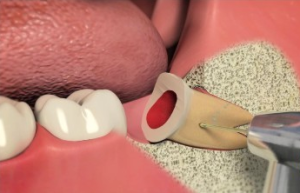
In the matter of destruction of teeth, adolescents should be viewed on the aforementioned age factor on the other side. The immaturity of the body and bad metabolism contribute to their crime.
Adolescents, along with adults, use the same harmful food, forgetting about useful rich in vitamins and minerals of products. The difference lies in the fact that the teenager's dental enamel is exposed to food chemical additives much more and is destroyed much faster.
The imbalance of hormones during puberty pernicably affects the state of indigenous teeth and teeth of wisdom. An important impact of heredity and genes. If parents do not boast a smile all thirty-two teeth, it is obvious that their children will face the same problem. Unwillingness to visit the dentist may lead to the fact that in time not cured caries or other damage to the tooth will lead to its complete destruction.
During pregnancy
In a pregnancy, the woman's body suffers from lack of vitamins and minerals. With constant reception of vitamin complexes, dentists do not guarantee the preservation of the integrity of the teeth during this period.
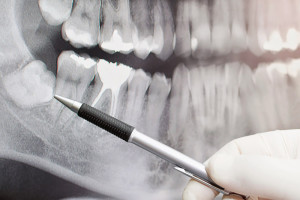 The root cause of dental of wisdom in pregnant women is the lack of calcium, and in connection with the features of the location and structure of the eight, they begin to crumble first. Against the background of hormonal restructuring in pregnant women, gestational gingivitis can develop. This phenomenon Characteristic for the period from 3 to 7 months of pregnancy and manifests itself in excessive bleeding gums.
The root cause of dental of wisdom in pregnant women is the lack of calcium, and in connection with the features of the location and structure of the eight, they begin to crumble first. Against the background of hormonal restructuring in pregnant women, gestational gingivitis can develop. This phenomenon Characteristic for the period from 3 to 7 months of pregnancy and manifests itself in excessive bleeding gums.
To reduce symptoms, a woman begins to clean his teeth less frequently, which leads to the development of caries and, as a result, crouching and destruction of the teeth. The unstable emotional state due to the restructuring of the hormonal background occupies a leading position in the matter of crumbling of teeth. When pregnancy, the eights are not removed, it is contraindicated, and treatment is possible only in the second trimester, when the use of anesthesia will not harm the health of the child and the development of its organs and systems.
Elimination of the problem
The first thing to do is if you find that the third molar is completely or partially crumbled, to turn to the dentist. Due to the lack of such an opportunity, you can follow the recommendations specified (but not more than 3 days):
- To remove the pain syndrome, take an anesthetic. To trust the dental pain is harmful to the body.
- Periodically, wechit the mouth with solutions of food soda with salt and grain champs to prevent the development of the inflammatory process.
In what cases are removed?
Healthy and properly located in the total dentition of the third molars are not removed. Emergency surgery is shown and inevitably in the following situations:
- remove the tooth of wisdom in cases when it is completely destroyed;
- the eight is retinated, which means the wrong arrangement of the tooth and the impossibility of teething;
- the tooth is deeply amazed by caries, and due to the lack of access it is impossible to cure;
- systematic injury to the edges of the tooth located around it the mucous membrane of the oral cavity;
- the teething is accompanied by inflammation of gums, headache, unpleasant sensations when swallowing and other painful phenomena.
What if it hurts an uncrowned tooth of wisdom?
It should be remembered that the positive effect when making a decision to treat the folded tooth of wisdom will have a temporary result. The situation around the problem tooth will be repeated, and the removal will become inevitable. Even if a small chip occurred, the tooth is also deleted. The plot where the piece broke off will constantly injure the inner surface of the cheek and accumulate flare and residues of food, which will lead to the development of caries.
Raw tooth is a source of inflammation and the appearance of infectious processes. And in this case, you should not try to solve the problem of receiving painkillers. Self-treatment is fraught with the development of pulpitis and abscesses.
Tooth croupled, and the root remained
In situations, when the root is left from the tooth of wisdom, which has no pathology, the question of expediency is set further treatment. In the case of the spread of infection, the likelihood of fogism and cyst is large - such a root is deleted. If there is inflammation on the roots, the treatment takes place in three stages:
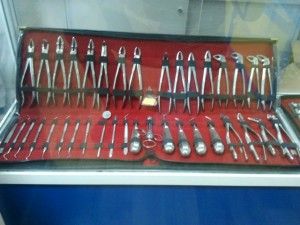
Preventive measures
It has long been known that the disease is easier to prevent than to treat. To prevent the destruction of wisdom teeth, the following preventive measures should be observed:
- refuse habits, adversely affecting the state of the teeth;
- follow the hygiene oral cavity;
- consume high-quality and vitamin food and water;
- to regularly visit the dentist who will be able to prevent the process of destruction and development of caries in the initial stages.
Removal of the roots remaining in the gum after the destruction of the tooth crown is quite complex procedure. It depends on the features anatomical structure, location, the presence of damage to the surrounding tissues. Difficulties causes a deep location of the roots or their debris remaining in the gum after removal.
Should I delete?
In each case, the dentist based on X-rays, determines the state of the root. If there is no infection surrounding bone tissue healthy, the channels are treated, seal, set the pin or the cultural tab.
Then the artificial crown is fixed on the cement. Be sure to be deleted if:
The root can become a focus of accumulation of bacteria and lead to inflammation, suppuration, osteomyelitis. Therefore, it is recommended to delete it.
Surgical instruments
How to remove the roots of the teeth if the tooth is completely destroyed? For this use special tools.
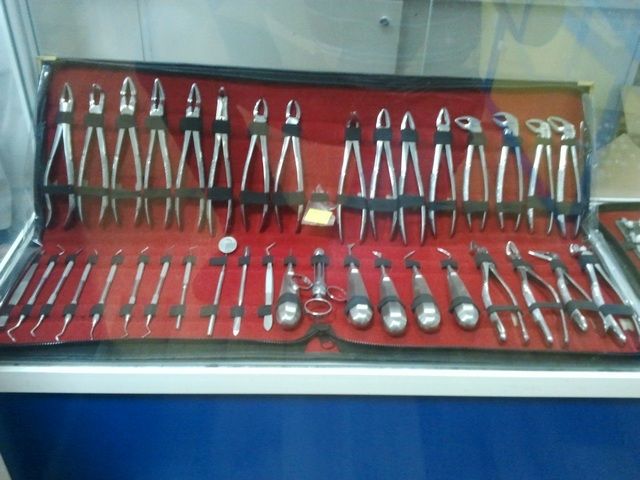
Difficulties when deleting
- Tooth fragility.
- The patient cannot open the mouth wide.
- Enhanced salivation.
- Elevated blood pressure.
These factors greatly make it difficult to work the dentist.
The procedure for extracting roots is carried out under local anesthesia. Pain patient will not feel. Anesthetic drugs are selected based on the complexity of the operation, the state of the patient, the deletion duration.
Pre-doing x-rayTo know whether the connecting spike has preserved, the length and shape of the roots.
Application of gear
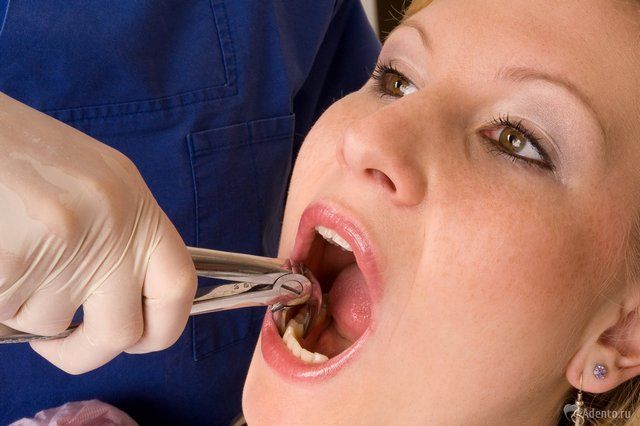 The nippers that are extracting the roots are of non-fragile closing endings-cheeks.
The nippers that are extracting the roots are of non-fragile closing endings-cheeks.
How to remove forceps tooth root if the tooth is destroyed? In the absence of inflammation, the doctor gently exfoliates the dispenser, circular bundles from the root so that it can be captured by forceps. It deepens to about 1 cm, strongly fixes the tips of the forceps. Circular movements dislocate the root from the well.
If it is impossible to achieve a dense clamp, peel the periosteum from the wells. Then the dentist shakes and extracts root remnants.
Roots on the top and lower jaw
Units nizhny row Deleted with forceps easier than the top. Their roots are shorter, but the walls of the holes are thicker. To do this, use a curved tool with narrow cheeks. Fangs to pull out more difficult, nippers are suitable with wide cheeks.
It is important when choosing a forcepets on the right or left side of the tooth, how widely the patient can open the mouth.
Using elevator
But it happens that the melting of the surrounding tissues occurred, the root is located very deeply and the tongs will not be removed. Remove the destroyed tooth root with an elevator. The instrument is on the principle of the lever.
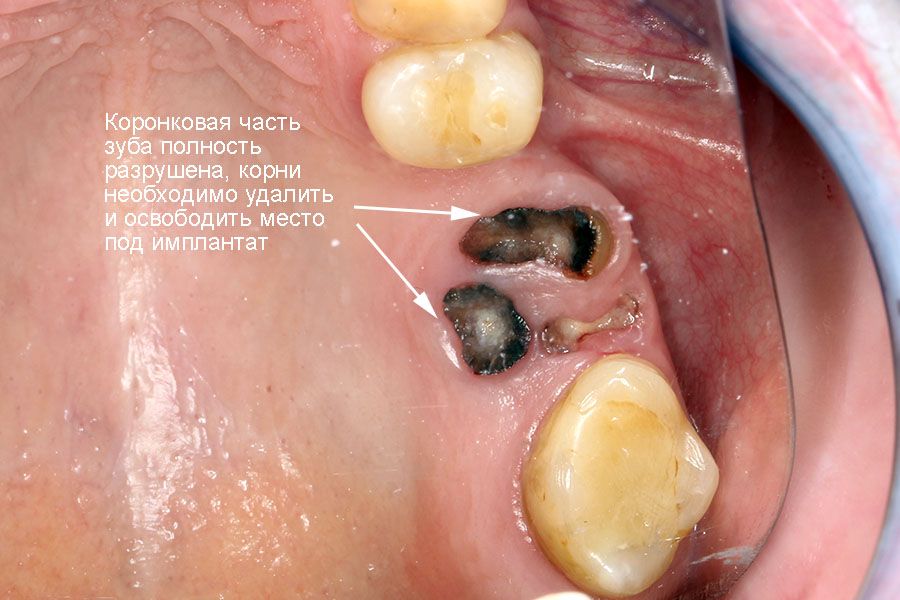 The elevator is placed between the wall of the well and the root, then rotate with pressure and pushed out completely or partially. If the root seemed above the surface of the gum not all, it is captured by forceps and remove.
The elevator is placed between the wall of the well and the root, then rotate with pressure and pushed out completely or partially. If the root seemed above the surface of the gum not all, it is captured by forceps and remove.
This corner tool can be removed by the separated roots of the lower units. They are approaching and pushed alternately.
The roots of the wisdom teeth are removed by a bayonet elevator if there are strong units nearby. The tool is administered between the root and the wall of the well from the side of the second molar, pressing, dislocate. Also remove incorrect eights.
Bormashin
If deep in the gum after removal remained fragments or the tooth has several curved, thin roots, and they diverge in different directions, the tooth is completely hidden into the bones, the tongs and the elevator will not be able to help. Removal is performed using bormer, under anesthesia, can last from 2 to 3 hours.
Conduct alveolotomy. Dock the mucous membrane and periosteum for the exposure of bone tissue. The wall of the wells is separated by a fissure boron, with the help of elevator or tongs with narrow peels, the root is extracted. If fragments are deep in the gum, the roots, very curved, then the incision is made to the top of the top. On the side between the wall of the well and  A small hole is drilled by the root, a straight elevator is introduced and the root pushes. At the end of the procedure, the gums are sorted.
A small hole is drilled by the root, a straight elevator is introduced and the root pushes. At the end of the procedure, the gums are sorted.
If a completely destroyed indigenous tooth is removed on the lower jaw, another technique is used. Bone here is much thicker, drill a plot from the cheat side various species Bora. If the jumper is preserved, it is also drilled, separating the root into several parts. With the help of the corner elevator, they alternately dismount.
On the upper jaw, when removing chewing units, the incision is made by the oral cavity.
Handling well
The wound is washed with an antiseptic, a special medicine is laid ("Alvozhel") to prevent inflammation. The mucosa flap is placed in place, apply seams for 5 - 6 days if the removal was performed by a surgical method. Sunning will help to avoid bleeding, promotes rapid healing, protects against infection.
After the procedure, analgesics and antibiotics are prescribed.
Removal of roots can cause a number of complications:
- Damage to nerves, especially dangerous when removing wisdom teeth.
- Fracture ,.
- Destruction of neighboring teeth.
- Perforation of the gaimor sinus, entering its cavity fragments during the operation on the upper jaw.
- Alveolit \u200b\u200b(pneumonia of the well).
- Bleeding arising due to rupture blood vessels. To stop use the clamp, after the vessel is tied up.
With accurate observance of the prescriptions of the doctor, regular oral oral hygiene will heal quickly and painlessly.





